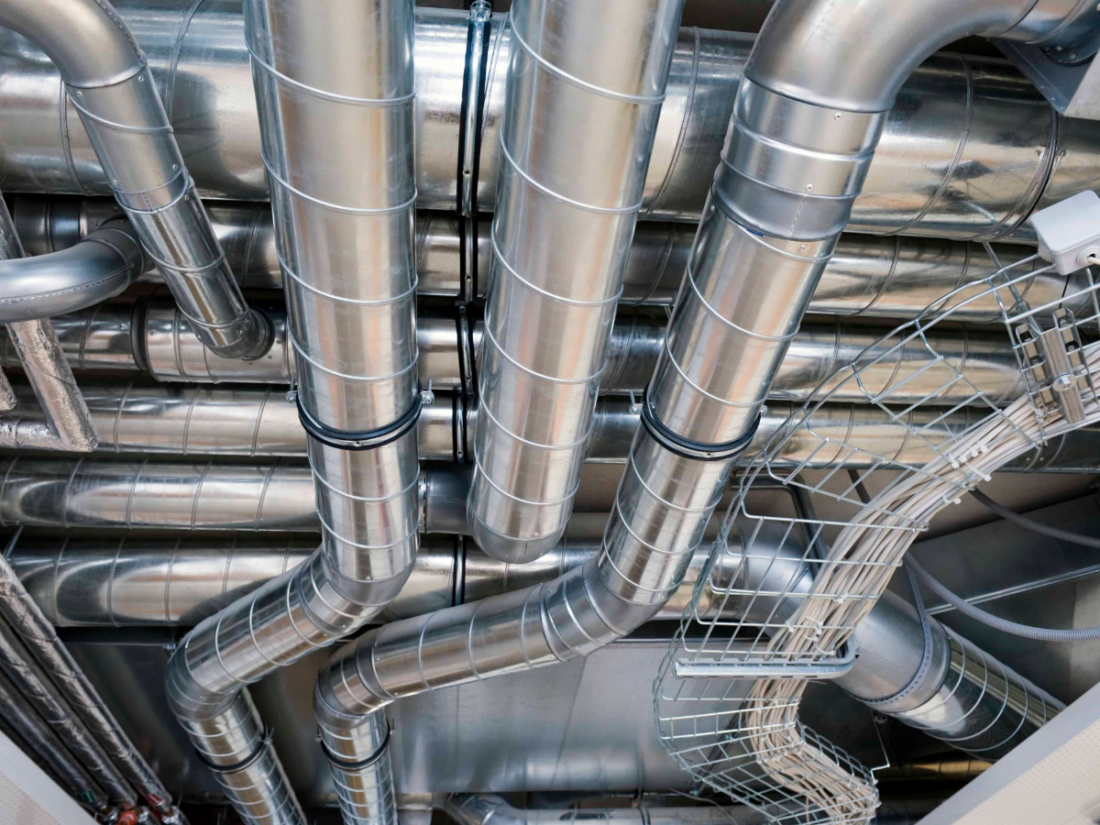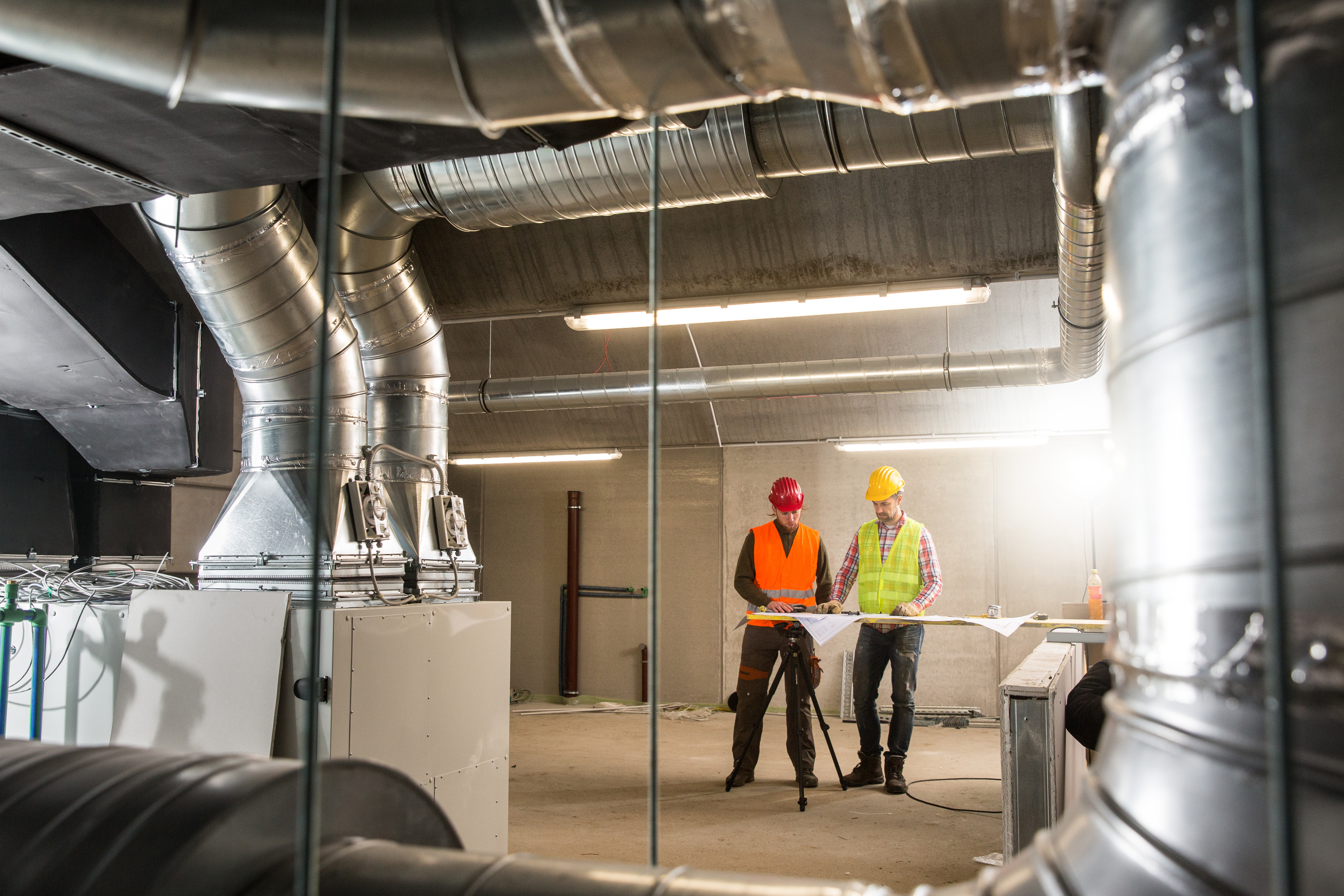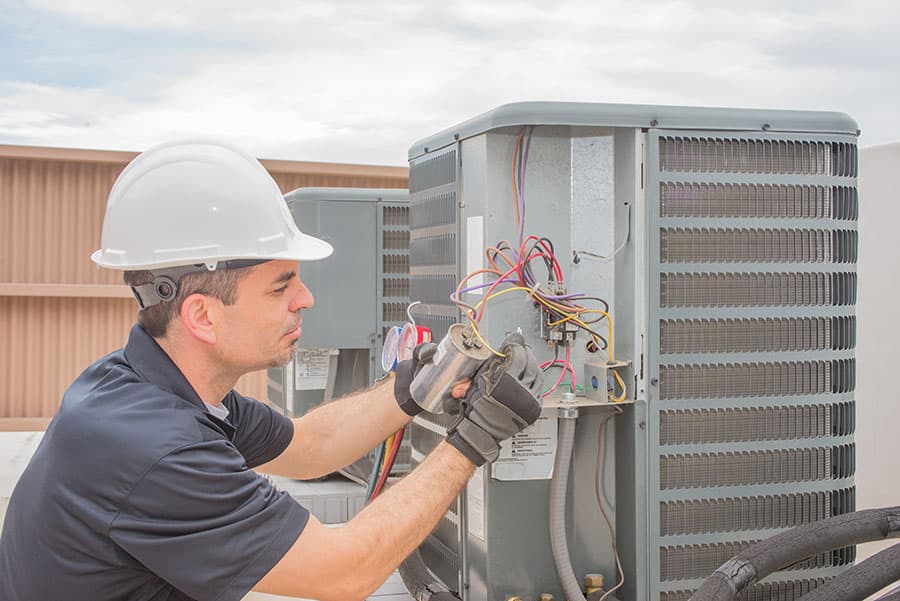Exploring the Essential Components of an Effective A/c System
An effective HVAC system is improved several essential elements that operate in harmony. Each part, from the thermostat to the ductwork, plays a crucial function in preserving convenience and power performance. Comprehending these components is important for enhancing performance and enhancing indoor air top quality. As one takes a look at these elements, the complex relationships between them disclose insights into boosting total system efficiency. What details elements contribute most to this efficiency?
The Role of the Thermostat in Cooling And Heating Efficiency

Typically ignored, the thermostat plays an essential role in the effectiveness of Cooling and heating systems. This small device functions as the primary nerve center, controling temperature level settings and guaranteeing suitable convenience within an area. By properly noticing the ambient temperature, the thermostat communicates with the heating, air flow, and air conditioning units to keep the preferred environment
An efficient thermostat decreases power intake by triggering the HVAC system just when essential, thereby stopping too much home heating or cooling. Modern programmable and smart thermostats boost this effectiveness even more by enabling users to set schedules and from another location change setups, adjusting to everyday routines.
The placement of the thermostat is necessary; improper area can lead to imprecise temperature readings, resulting in ineffective procedure. Generally, a well-functioning thermostat not only boosts comfort yet likewise adds substantially to power cost savings and the durability of the cooling and heating system.
Recognizing the Relevance of Air Filters
Air filters offer a vital feature in HVAC systems by guaranteeing that the air circulating within a space stays tidy and healthy. These filters trap dirt, allergens, and other pollutants, preventing them from being recirculated throughout the setting. By recording these particles, air filters add to improved indoor air high quality, which can considerably profit passengers' health, especially those with allergies or respiratory system conditions.
Additionally, keeping tidy air filters boosts the performance of HVAC systems. Stopped up filters can restrict air movement, creating the system to function tougher to preserve desired temperatures, leading to enhanced energy consumption and greater utility bills. Frequently changing or cleansing filters is a vital upkeep action that can lengthen the life-span of cooling and heating devices. Ultimately, recognizing the value of air filters enables home owners and building supervisors to take proactive measures to assure a well-functioning, effective HVAC system that promotes a risk-free and comfortable interior atmosphere.

The Functionality of the Heater and Heatpump
Heaters and warm pumps are critical components of HVAC systems, in charge of giving heat throughout cooler months. Heating systems operate by heating air through combustion or electrical resistance, then distributing it throughout the home through air ducts. They commonly provide rapid home heating and can be fueled by gas, electricity, or oil, relying on the system kind.
On the other hand, heatpump transfer warmth as opposed to create it. They extract warmth from the outside air or ground, even in low temperatures, and transfer it inside your home. HVAC experts. This double performance allows heatpump to likewise provide cooling in warmer months, making them functional choices for year-round environment control
Both systems need correct upkeep to guarantee performance and long life. While furnaces master extreme chilly, heatpump can be beneficial in modest environments. Recognizing their unique functionalities aids home owners in selecting the most suitable choice for their heating needs.
Exploring the Air Conditioning System
The air conditioning unit is a crucial element of a/c systems, readily available in numerous types to fit various needs. Recognizing the efficiency ratings of these units is essential for making informed selections concerning energy intake and cost. This section will discover the varied sorts of ac system and clarify exactly how performance scores effect performance.
Kinds Of Air Conditioners
While different elements influence the selection of cooling systems, comprehending the different types available is important for house owners and structure managers alike. Central air conditioning conditioners are created to cool down whole homes or structures, using a network of ducts for air flow. Window units offer an even more local option, perfect for little spaces or single spaces. Mobile air conditioners give adaptability, permitting individuals to relocate the system as required. Ductless mini-split systems are an additional option, incorporating the effectiveness of central systems with the convenience of zoning, as they need no ductwork. Finally, geothermal systems harness the earth's temperature for energy-efficient cooling. Each kind features unique benefits, making informed selections necessary for efficient climate control.

Performance Ratings Discussed
Understanding performance rankings is crucial for choosing the appropriate a/c unit, as these metrics provide understanding into the system's efficiency and energy consumption. One of the most typical ranking for air conditioners is the Seasonal Power Effectiveness Proportion (SEER), which measures the cooling result during a typical air conditioning period separated by the total electric power input. A greater SEER indicates much better effectiveness. In addition, the Power Efficiency Proportion (EER) is utilized for determining effectiveness under details problems. Another essential metric is the Power Star certification, which symbolizes that a device meets strict power performance guidelines. By evaluating these scores, consumers can make informed choices that not only enhance convenience however additionally minimize power costs and environmental effect.
The Value of Ductwork and Airflow
Reliable ductwork design and airflow administration play important roles in the general effectiveness and performance of cooling and heating systems. Appropriate ductwork guarantees that conditioned air is distributed evenly throughout a space, reducing temperature variations and boosting convenience. Properly designed air ducts minimize resistance to air flow, minimizing the workload on a/c tools and ultimately lowering power intake.
Airflow administration involves tactically positioning vents and registers to enhance the circulation of air. This prevents common concerns such as cold or hot areas, which can take place when airflow is blocked or improperly well balanced. In addition, the best duct materials and insulation can further improve performance by decreasing heat loss or gain during air transportation.
An efficient ductwork system not only adds to power financial savings yet can likewise extend the life expectancy of a/c tools by decreasing unnecessary pressure (HVAC experts). Comprehending the significance of ductwork and airflow is crucial for accomplishing peak A/c system performance.
Normal Maintenance Practices to Enhance Efficiency
Routine upkeep methods are essential for guaranteeing peak performance of a/c systems. These practices consist of routine examinations, cleaning, and essential repair work to keep the system running efficiently. Consistently transforming air filters is crucial, as clogged filters can obstruct airflow and lower effectiveness. In addition, technicians ought to examine and tidy evaporator and condenser coils to avoid getting too hot and energy waste.
Yearly specialist assessments are also recommended, as skilled specialists can determine possible concerns before they escalate. Oiling moving parts lessens damage, adding to a longer life expectancy for the system. Furthermore, making certain that the thermostat functions more info appropriately aids in maintaining ideal temperature control.

Often Asked Concerns
How Commonly Should I Change My Thermostat?
Thermostats should generally be replaced every 5 to 10 years, relying on use and modern technology advancements. Regular checks are a good idea to assure peak efficiency, specifically if experiencing inconsistent temperature control or enhanced power costs.
What Size Air Filter Is Finest for My A/c System?
The finest size air filter for a heating and cooling system varies by system layout. Commonly, it's crucial to consult the proprietor's guidebook or check the existing filter measurements to assure peak efficiency and air quality.
Can I Install a Warmth Pump Myself?
Installing a heat pump separately is possible for skilled individuals, but it requires knowledge of local codes and electric systems. Working with an expert is recommended to guarantee proper installation and suitable system efficiency.
Exactly how Do I Know if My Ductwork Is Efficient?
To determine ductwork performance, one ought to look for leakages, procedure airflow at vents, check insulation top quality, and examine temperature distinctions in between supply and return air ducts. Professional analyses can supply detailed understandings into general performance.
What Are Indicators My A/c Demands Immediate Maintenance?
Signs that an a/c system needs prompt maintenance consist of unusual sounds, inconsistent temperature levels, raised power expenses, undesirable smells, and regular cycling. Addressing these concerns immediately can prevent further damage and assurance optimal system performance.
Air filters offer a crucial function in Cooling and heating systems by ensuring that the air flowing within an area continues to be clean and healthy and balanced. Additionally, preserving tidy air filters improves the performance of HVAC systems. Ductless mini-split systems are an additional option, incorporating the effectiveness of central systems with the comfort of zoning, as they require no ductwork. Understanding performance ratings is essential for choosing the right air conditioning device, as these metrics provide insight right into the system's performance and energy usage. The ideal size air filter for a Heating and cooling system varies by system style.